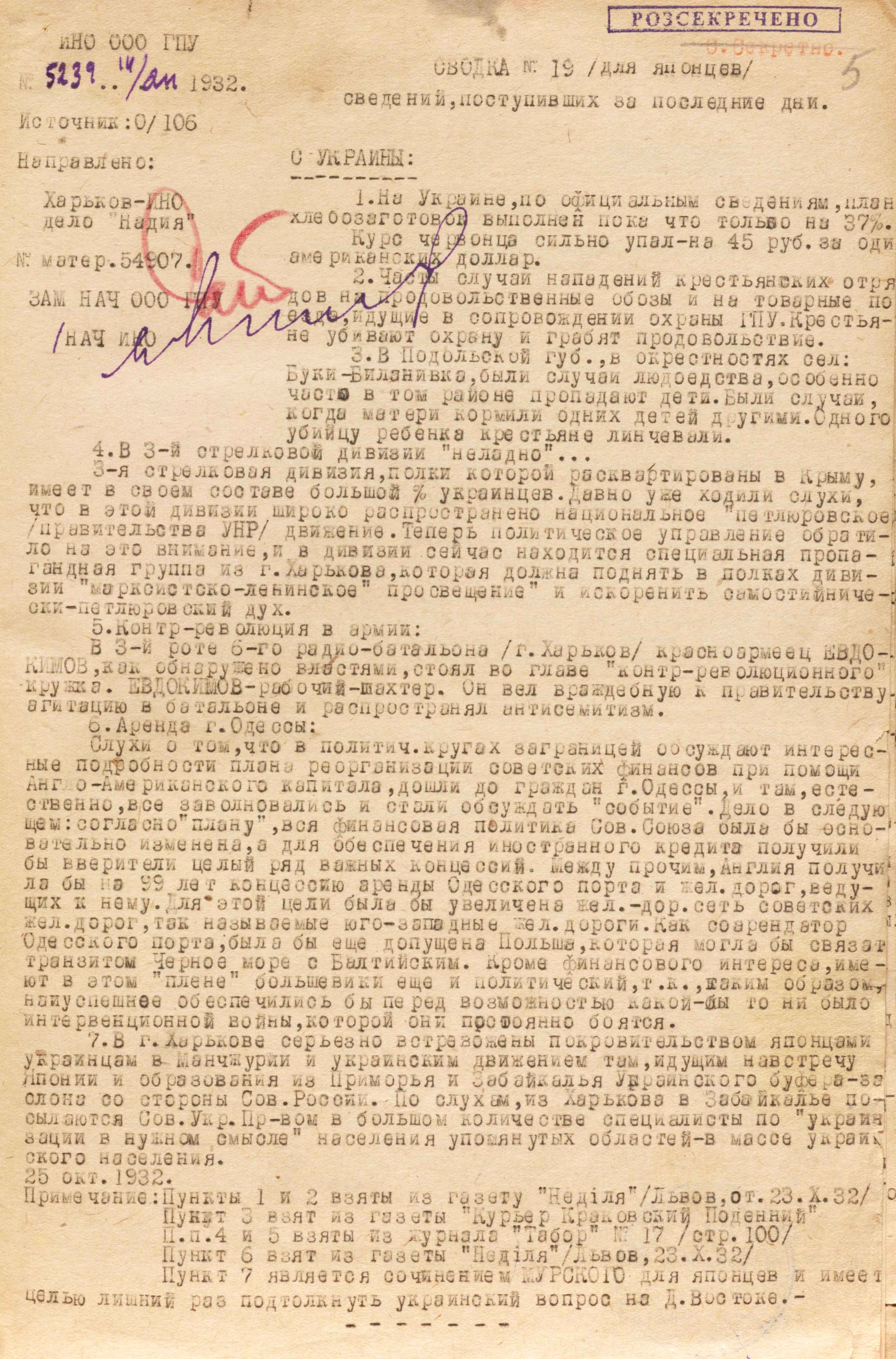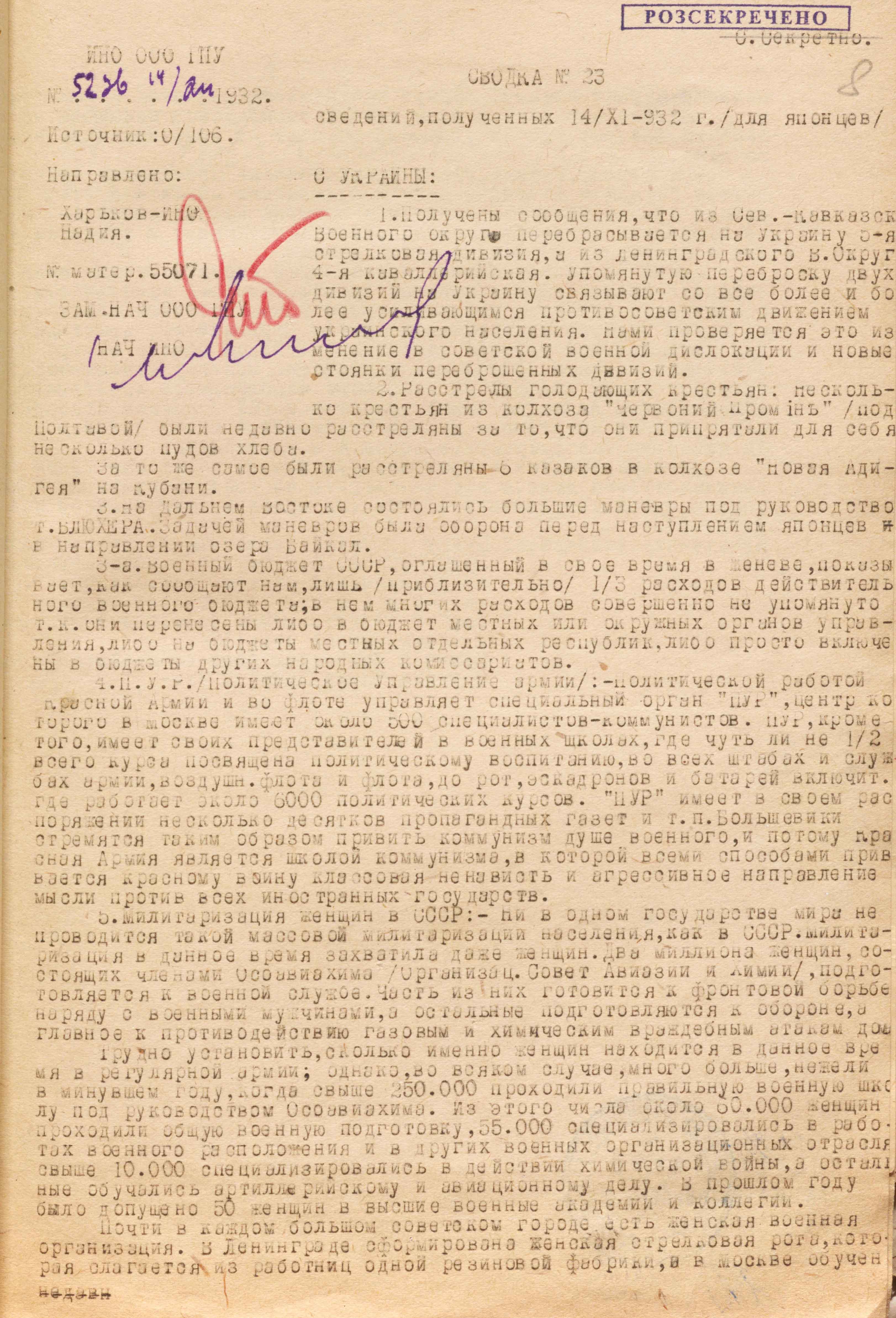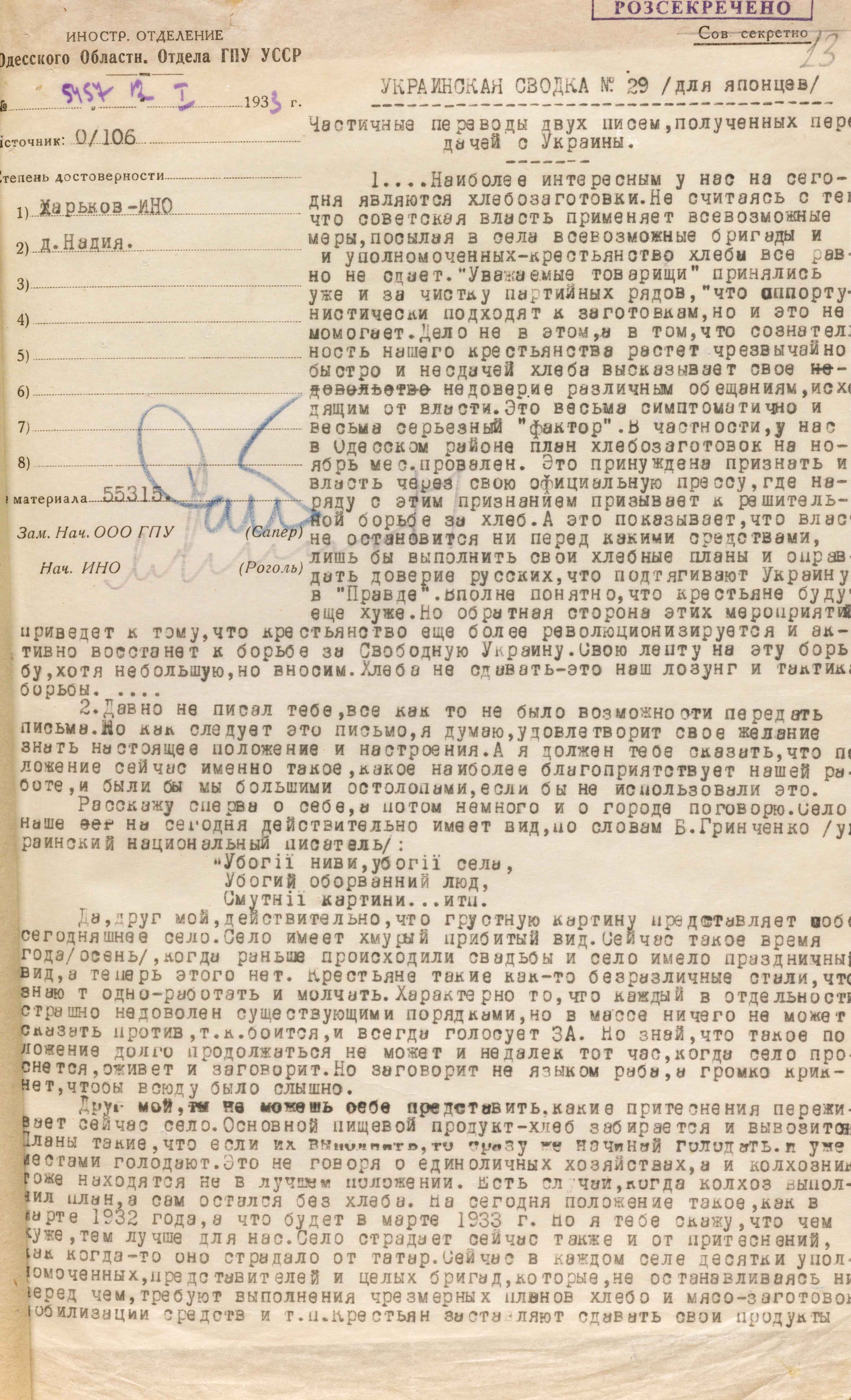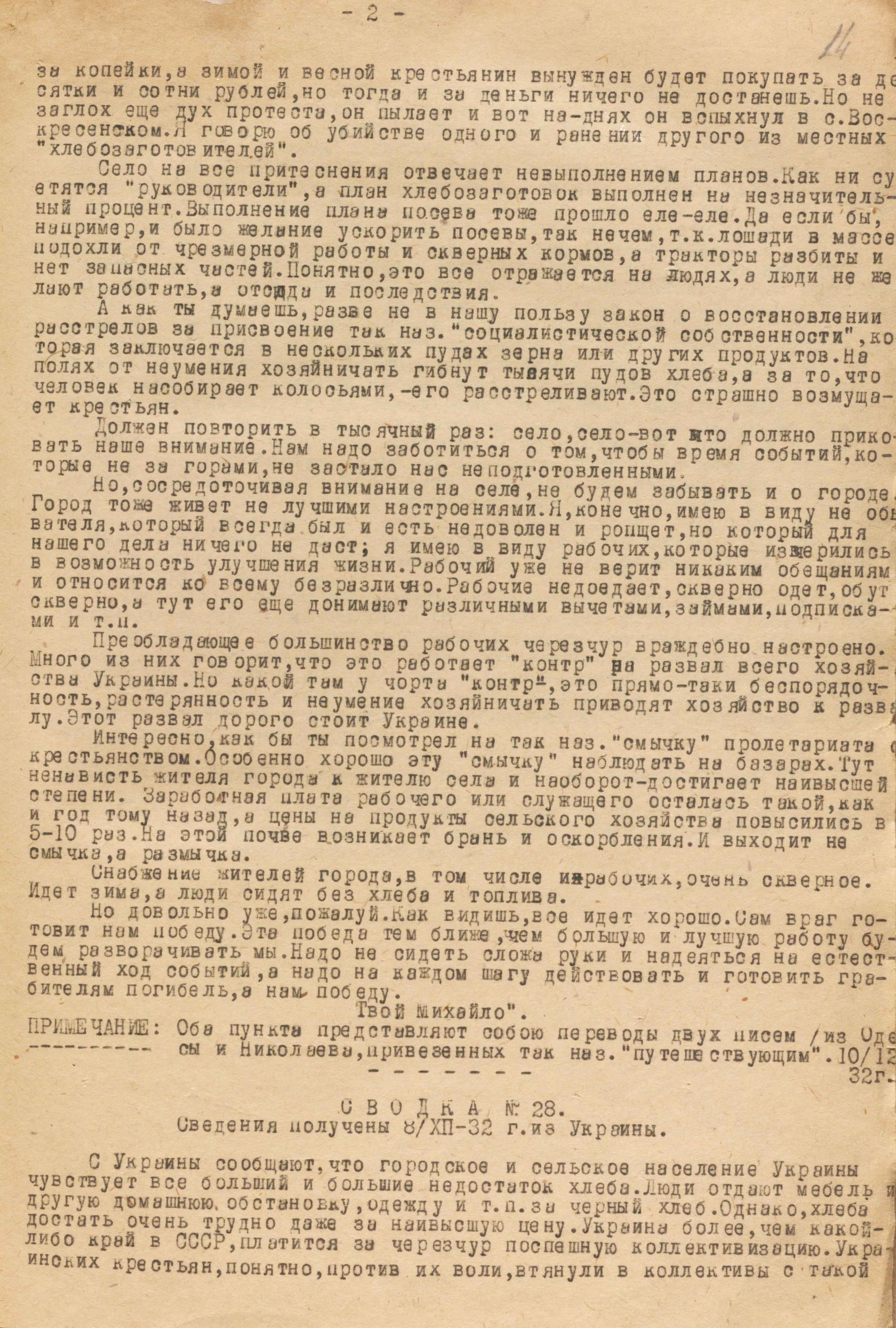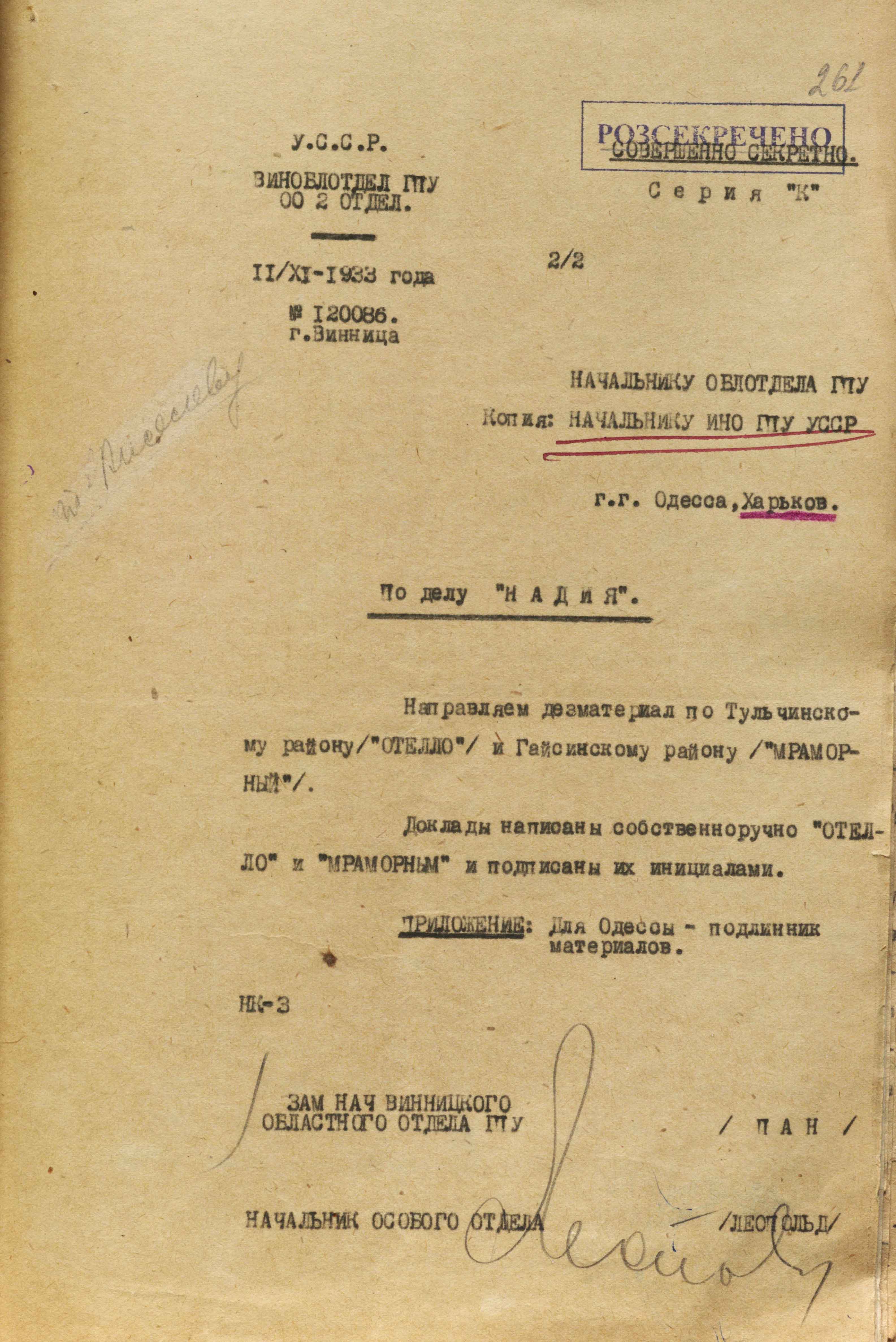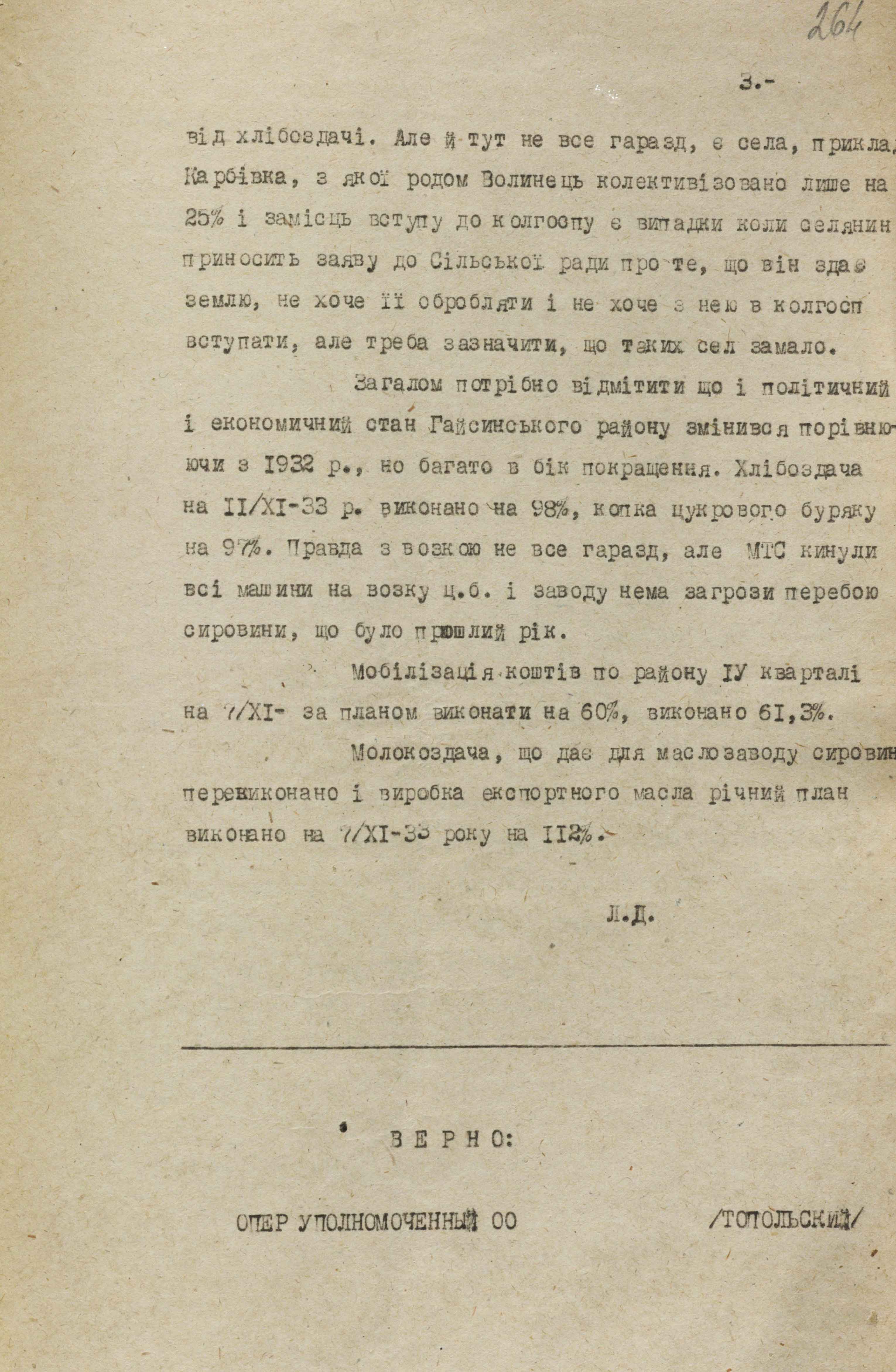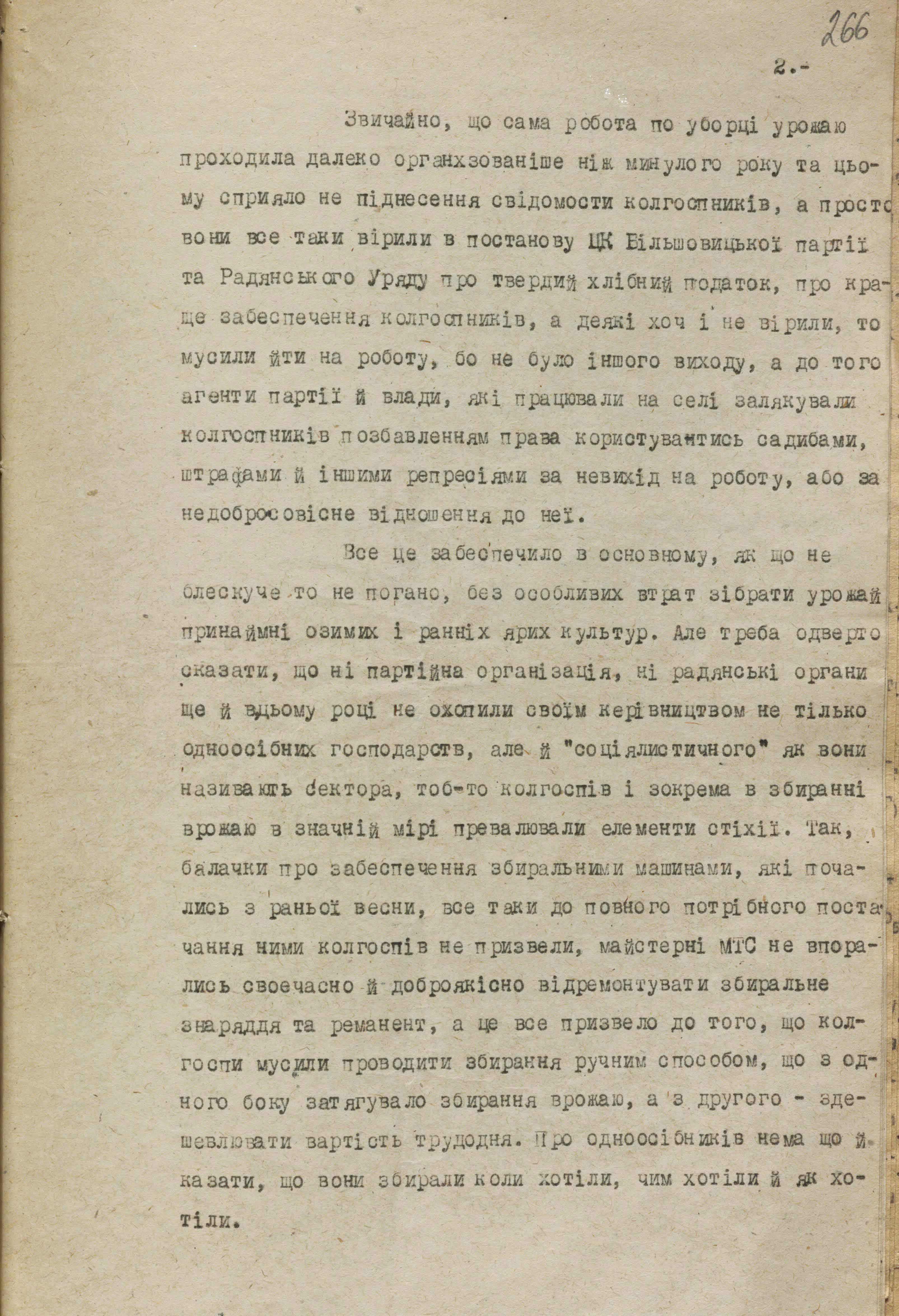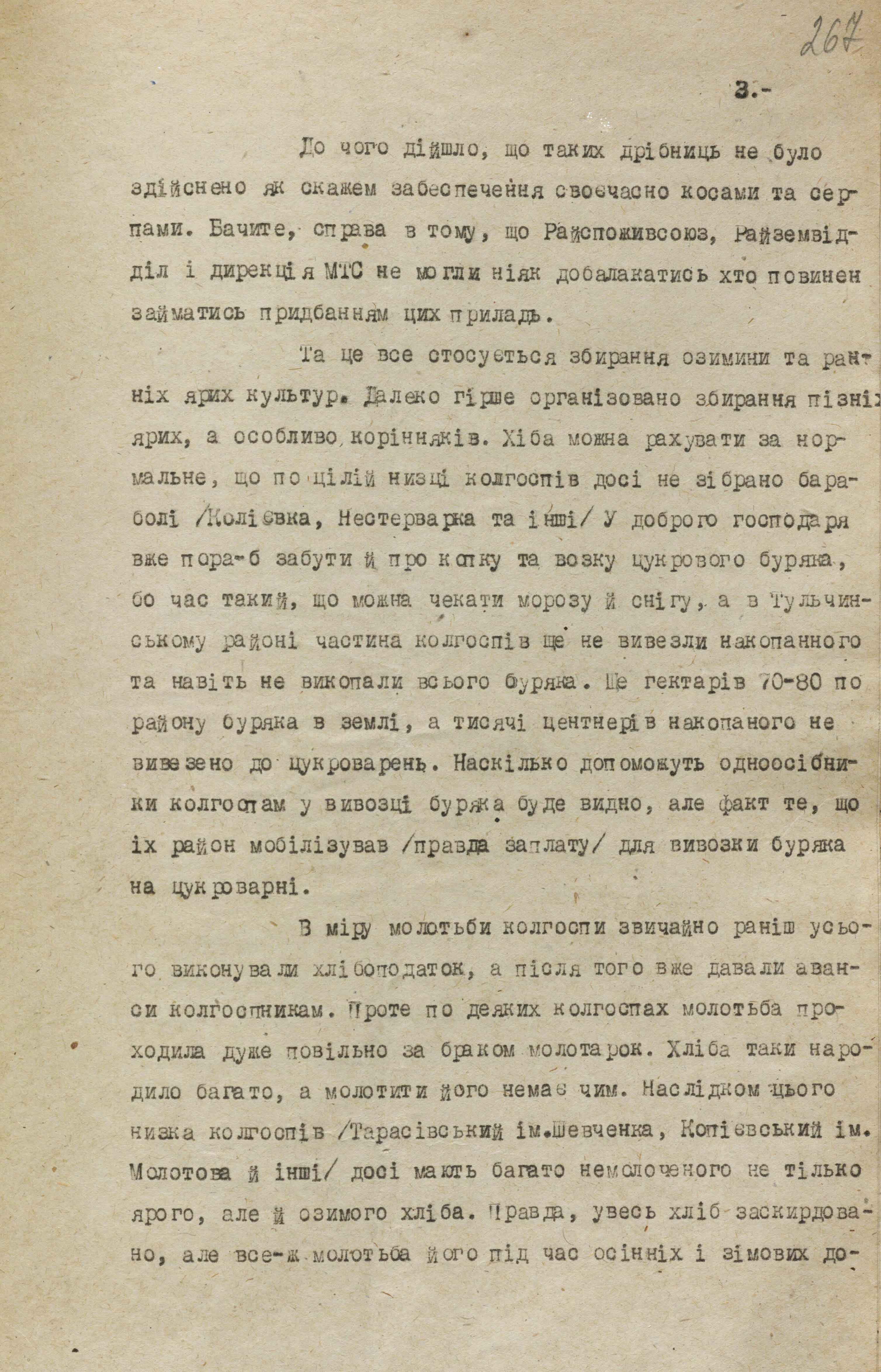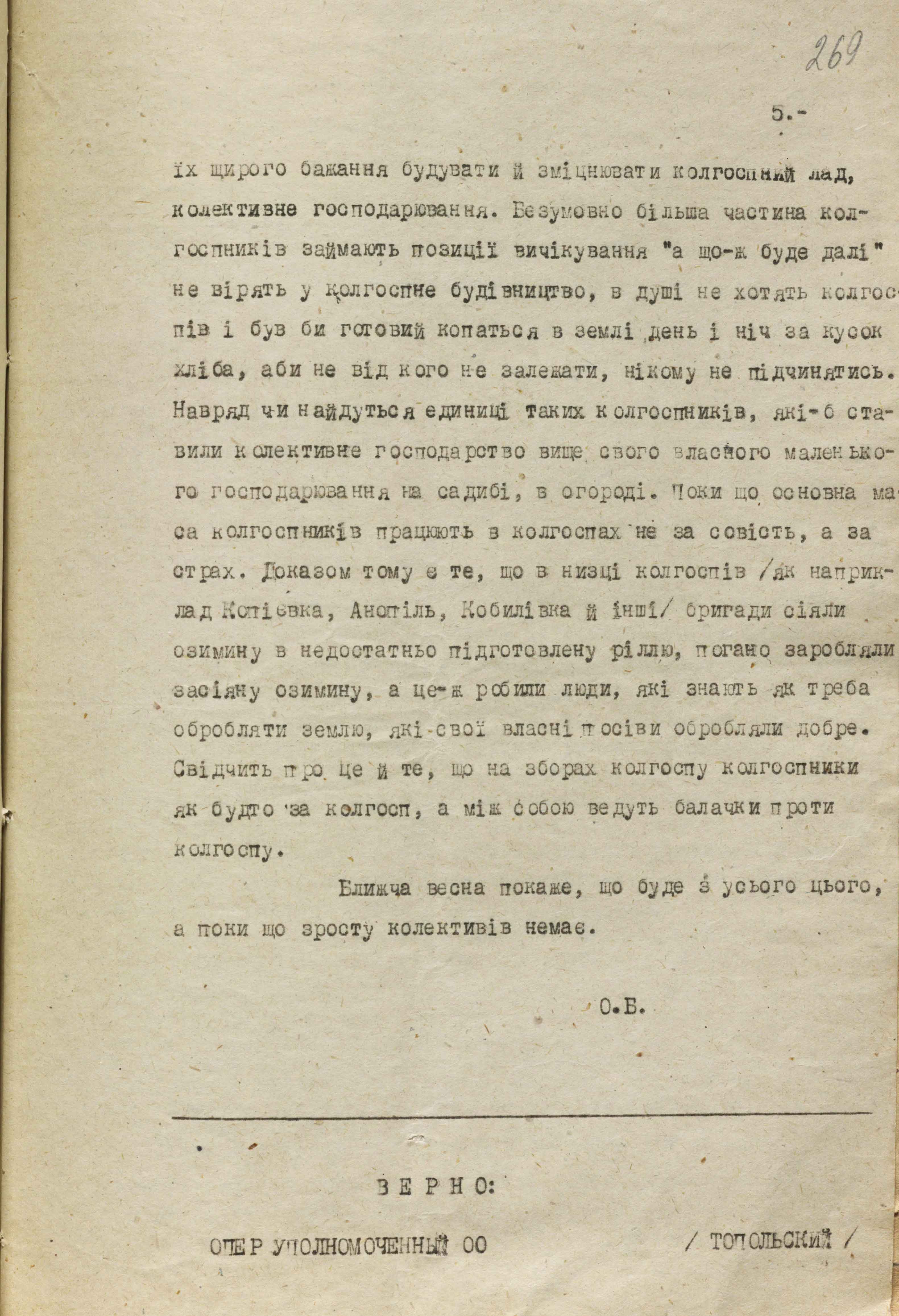The Holodomor of 1932–1933. Real Facts and the chekists’ “Disinformation”
11/23/2025

Documents from the operational cultivation of the Ukrainian community in Istanbul by the gpu of the Ukrainian ssr in the late 1920s and early 1930s contain materials relating to the Holodomor in Ukraine. On the one hand, they shed light on the stalinist regime’s horrific crimes related to the artificial creation of famine; on the other hand, they expose the measures taken by the kremlin’s special services to conceal the true state of affairs from representatives of Ukrainian émigré centers and the international community.
From Intercepted Messages
According to declassified documents from the archives of the Foreign Intelligence Service of Ukraine, during that period, the leaders of the special service of the State Center of the Ukrainian People’s Republic in exile intended, with the assistance of members of the Ukrainian community in Istanbul, to establish ties with Ukraine, send propaganda literature there, and obtain information about what was really happening on Ukrainian territory. This was to be done through the mediation of sailors on soviet merchant ships that sailed between Istanbul and Odessa and were sympathetic to the Ukrainian cause. At the same time, some sailors who presented themselves as liaisons with the UPR underground in Ukraine turned out to be agents of the gpu. Besides, the chekists had agents among representatives of the Ukrainian community in Türkiye. This allowed them to intercept letters, messages, reports, and other printed materials.
After some time, UPR leaders realized that soviet special services were involved in this matter, sounded the alarm, and began to take countermeasures. The mutual confrontation, accompanied by exposés and the activities of double agents, continued for several years. During that time, hundreds of diverse documents were accumulated in a multi-volume case file kept by the gpu of the Ukrainian ssr as part of an operation “Nadiya”. Among them, materials related to the Holodomor of 1932–1933 in Ukraine are of particular interest. Here are excerpts from some of them.
From “Summary No. 19 (for the Japanese) of information received in recent days from Ukraine:
- According to official information, in Ukraine, only 37 % of the grain deliveries to the state plan has been fulfilled so far.
The exchange rate of the chervonets (traditional name for a large foreign and domestic gold coin, literally meaning red gold coin – Transl.) has fallen sharply – by 45 rubles for 1 US dollar.
2. There are frequent cases of villagers groups’ attacks on food convoys and freight trains traveling under the escort of the gpu. The villagers kill the guards and rob the food.
3. In Podillia province, in the vicinity of the villages of Buky-Bulanivka, there have been cases of cannibalism. Children disappear especially often in that area...
(FISU. – F.1. – Case 7408. – Vol. 4. – P. 5).
The document is dated December 14, 1932, prepared by the foreign department of the Odessa district department of the gpu) and sent to the foreign department of the gpu of the Ukrainian ssr in Kharkiv. At the end, there are notes stating that points 1 and 2 were taken from the newspaper “Nedilia “(Lviv, dated October 23, 1932), point 3 – from the newspaper “Kurier Krakowski Codzienny”. According to the case materials, the remark in the summary “for the Japanese” meant that UPR activists in Istanbul at that time had established contacts with Japanese diplomats and intelligence officers. The latter agreed to support the Ukrainian cause and exchange information.
From “Summary No. 19 of information received on 14/XI-1932 (for the Japanese) from Ukraine:
1. Reports have been received that the 5th Rifle Division is being redeployed to Ukraine from the North Caucasus Military District, and the 4th Cavalry Division – from the Leningrad Military District. The transfer of these two Divisions to Ukraine is linked to the growing anti-soviet movement among the Ukrainian population. We are verifying this change in the soviet military deployment and the new locations of the redeployed Divisions.
2. Execution of starving peasants: several peasants from the “Chervonyi Promin” collective farm (near Poltava) were recently shot dead for hiding a few poods (pood or pud – 36 lb, 16.38 kg – Transl.) of grain for themselves...
Source notes: Point 1 is taken entirely from Colonel Porokhivskyi’s letter. Point 3 is from the Brazilian newspaper “Ukr. Khliborob”
(FISU. – F.1. – Case 7408. – Vol. 4. – P. 8)
From “Summary No. 28 of information received on 8/XII–1932 from Ukraine:
Reports from Ukraine indicate that the urban and rural populations of Ukraine are experiencing an increasing shortage of bread. People are trading furniture and other household items, clothing, etc. for brown bread. At the same time, bread is very difficult to obtain, even at the highest price. Ukraine is paying more than any other region in the ussr for overly hasty collectivization. Ukrainian peasants, clearly against their will, were drawn into collectives with such haste and indiscriminateness that only the bolsheviks, who are conducting experiments, are capable of. This harsh reality lasted two years, and Ukrainian peasants had the opportunity to see for themselves what collectivization meant. Last year, all the grain was taken from the peasants in the collectives, and they were left with nothing to sow. Due to a lack of provisions, the peasants slaughtered their cattle and horses last winter and spring and had nothing to plow with. Tractors were supposed to replace horses in collective farms, but that was only in theory, not in reality. In Kyiv district alone, there are about 600–700 broken tractors, and there is no certainty that they will be repaired...
Note: Point 1 was taken entirety from the newspaper “Novyi Shliakh”, No. 43, dated 15/XI–1932, p. 1.
(FISU. – F.1. – Case 7408. – Vol. 4. – P. 14–15).
From “Summary No. 31. Information received on 24/12–1932.
1. From Ukraine. Not long ago, an incident quite typical of current life in the ussr took place at the railway station in Kyiv. A wagon with food supplies was standing on the rail-track awaiting further instructions. The population found out about this and flocked to the station in droves. Taking advantage of the temporary absence of gpu members, they rushed to the wagon, pushing aside the railway guards who were trying to resist the attack. The gpu arrived after a phone call and attacked the crowd, which, of course, began to flee. The chekists chased after them. The people began to throw food out of the train, hoping that this would stop the chasing, but the chekists began to shoot at them, causing incredible panic among those around them. As a result, five women and two men among those who fled were killed, and several passers-by were seriously injured.
A similar incident occurred in Odesa, where a crowd fought a real battle with a gpu unit escorting a transport carrying food for the army. Several people were killed and many were arrested. Also in Odesa, a crowd attacked a wagon loaded with potatoes that was standing at the station and was destined for moscow...
Source note: Point 1 was taken from the newspaper “Narodne Slovo” (Pittsburgh, p. 3)
(FISU. – F.1. – Case 7408. – Vol. 4. – P. 32).
Falsified Reports
The gpu developed a series of measures to prevent the leakage of such information. These, among others, included censorship of correspondence, punishment for spreading information about the real situation in villages, which was interpreted as anti-soviet agitation and propaganda, and a ban on visiting certain areas by foreign journalists. At the same time, measures were also taken to misinform the international community. This is evidenced by some documents from the archive.
The gpu had units that were referred to in internal jargon as “Contra and dezo”. They were engaged in falsifying documents about the state of affairs in different spheres of the country’s life – in industry, agriculture, the armed forces, party and economic bodies, public sentiment, and so on. They prepared fake letters, proclamations, and bulletins, supposedly issued by underground organizations. They added distorted information to real information, which they promoted through various channels abroad. They armed agents with such information before sending them abroad and introducing them into emigrant centers. It was common practice to provide disinformation materials to transcoded agents and couriers so that they could report it to their supervisors upon their return, as a result of completing their tasks of collecting intelligence.
Several such documents were found in the case file. These are reports on the situation in Tulchyn and Haisyn districts of Vinnytsia region, allegedly compiled by concerned individuals to convey the real situation to Ukrainian émigré centers. In reality, the texts were written in the offices of the gpu. This is evidenced by the cover letter from the Vinnytsia to the Odessa regional department of the gpu, dated November 11, 1933. It pointed out:
“Regarding the case of ‘Nadiya’.
We are sending you disinformation materials on Tulchyn district (“Otello”) and Haisyn district (“Mramornyi”).
The reports were written by “Otello” and “Mramornyi” themselves and signed with their initials.
Appendix: for Odessa – originals of the materials.”
(FISU. – F.1. – Case 7408. – Vol. 4. – P. 261).
In other words, the individuals who, at the request of the UPR émigré community, prepared reports on the state of affairs in their places of residence, were in fact agents of the gpu “Otello” and “Mramornyi”. Therefore, in their letters, they embellished the overall picture, avoiding stories about the forced seizure of crops, the consequences of collectivization, numerous deaths from starvation, and people’s dissatisfaction with the policies of the soviet government. They wrote that the situation was difficult in 1932, but in 1933 the bolsheviks allegedly threw all their forces into helping the rural areas and everything changed significantly. Here is what they reported, in particular, about the situation in Haisyn district.
“The spring of 1933 took its toll on Haisyn district,” reads a letter signed with the initials L. D. “The situation was extremely difficult during the cultivation of sown fields, both in collective farms and in individual sectors. The famine in some villages would have led to a complete breakdown of spring work, but food aid was provided to both collective farmers and individual farmers, and the situation turned out well.... The harvest throughout the district went much better than not only we, but also they had hoped. For example, the village of Krasnopilka, which has 850 households, and Hubnyk, which has the same number, finished harvesting their main crops ahead of schedule. Like a number of other collective farms, they rushed with machines and people to help those collective farms where the work was less organized, and helped to harvest winter and spring crops...
On 10/XI–33, advanced collective farms such as Hubnytskyi and Ladyzhynskyi farm, began distributing workdays, and as a result, instead of last year’s kilo, Motria Stasiuk receives 160 poods for her workdays of three working members of the family, which is 6.5 kilos for each...
...The law on the delivery of grain to the state led to the fact that individual farmers, without any administrative pressure, fulfilled the grain delivery plan, and cases of grain hoarding, which were widespread last year, became very rare...
In general, it should be noted that both the political and economic situation in Haisyn district has changed compared to 1932, very much for the better. Grain delivery for 11/XI–1933 was completed at 98 %, sugar beet harvesting – at 97 %...
(FISU. – F.1. – Case 7408. – Vol. 4. – P. 262–264).
The content of the report on the Tulchyn district also boiled down to the fact that the harvest in 1933 was much better. This was allegedly facilitated by weather conditions, better organization of work by the authorities, strengthening of labor discipline in collective farms, and the fact that “the political department formed under the MTS, headed by incorruptible, steadfast communists, played a significant role in strengthening the organizational and political situation”. This was also allegedly facilitated by “not a rise in the consciousness of the collective farmers, but simply by the fact that they still believed in the resolution of the central committee of the bolshevik party and the soviet government on a fixed grain tax and better provision for collective farmers, and even those who did not believe had to go to work...”
Behind these phrases, the ears of the chekists were clearly sticking out. Such was the desire to show that there had been minor difficulties in the past, but now, so to speak, everything was fine, with the provision of both equipment and “high-quality, proven, pure wheat”. However, despite all the conditions created, people do not want to join the collective farms, they are careless about the land, sabotage grain deliveries plans, do not adhere to crop rotation, and store the harvest poorly, so it spoils. That is, they are supposedly to blame for the famine, not the government and the bolshevik party.
Despite the fact that little information about the events of that time has survived to this day, even the information that researchers have managed to obtain paints a completely different picture. In Haisyn district alone, more than 23,000 people died during the Holodomor of 1932–1933 (according to the National Book of Memory of the Victims of the Holodomor of 1932–1933 and the Encyclopedia of Modern Ukraine). The district suffered one of the worst blows of the famine in Podillia. Village councils registered deaths of dozens of people every day.
The grain deliveries quotas, which the local population was physically unable to meet, were inflated. By the end of 1932, so-called “towing brigades” began to arrive in the district, confiscating not only grain, but also potatoes, beets, beans, dried mushrooms, and other food. Peasants who tried to find grain on collective farm threshing floors were punished by shooting dead or exile. There are testimonies from residents of the area that people came to Haisyn railway station after hearing that there was grain in the carriages there. They were dispersed by soldiers, and several were shot dead.
Therefore, previously unknown documents from the gpu/nkvd of the ussr shed light on new episodes of crimes committed by stalin’s regime against the Ukrainian people, how the chekists tried to cover up those crimes through special operations, falsify real events, and convey a distorted picture to the world community, shifting the focus away from the reasons and consequences and blaming those who suffered the most but were unable to speak the truth for themselves. They were unable to do so because bolshevik authorities took away their bread, their rights, and their very lives.
